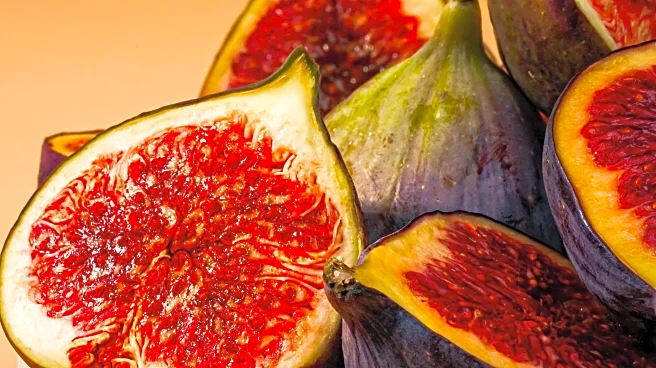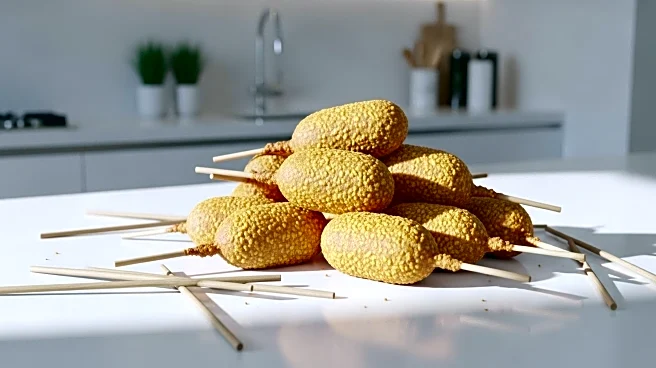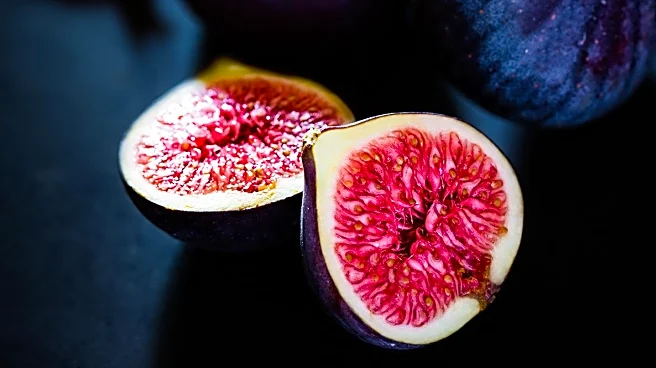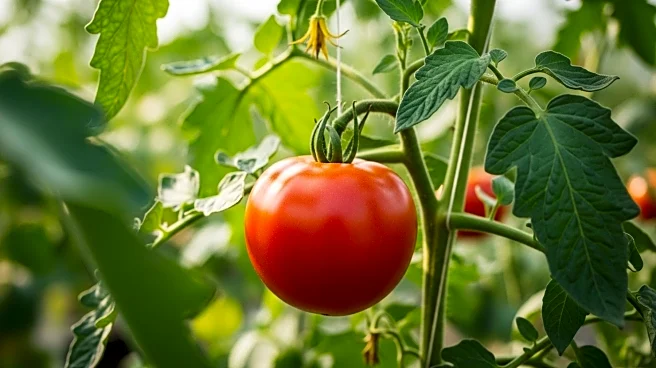What's Happening?
Recent discussions have emerged regarding the presence of fig wasps in figs consumed in the United States. The fig species Ficus carica, commonly eaten in the U.S., includes several cultivars that are parthenocarpic, meaning they do not require pollination by fig wasps to ripen. This characteristic ensures that most figs available in supermarkets are free from wasps. Fig wasps, which are small insects about the size of a fruit fly, play a crucial role in the life cycle of many fig trees through a mutualistic relationship. However, the figs consumed in the U.S., such as Mission figs and Brown Turkey figs, do not rely on this pollination process, thus eliminating the presence of wasps. According to Carlos Machado, a biology professor at the University of Maryland, most figs eaten in the U.S. are devoid of wasps.
Why It's Important?
Understanding the relationship between figs and fig wasps is significant for consumers who may have concerns about the presence of insects in their food. The clarification that most figs in the U.S. are wasp-free can alleviate consumer concerns and potentially influence purchasing decisions. This information is also relevant for agricultural practices and the fig industry, as it highlights the types of figs that can be cultivated without the need for wasp pollination. The mutualistic relationship between figs and fig wasps is a fascinating example of co-evolution, but for the U.S. market, the focus remains on parthenocarpic varieties that do not require this interaction.
What's Next?
As consumer awareness grows, the fig industry may continue to emphasize the cultivation and marketing of parthenocarpic fig varieties to meet demand for wasp-free products. Researchers may also further explore the mutualistic relationship between figs and fig wasps to understand its ecological significance and potential applications in agriculture. Additionally, educational efforts could be made to inform consumers about the nature of fig cultivation and the types of figs available in the market.
Beyond the Headlines
The mutualism between figs and fig wasps is a complex ecological interaction that has evolved over millions of years. This relationship is an example of how species can co-evolve to benefit each other, with fig trees providing a habitat for wasps and wasps aiding in the pollination process. While this interaction is not necessary for the figs consumed in the U.S., it remains a critical aspect of fig ecology globally. The study of such mutualisms can offer insights into biodiversity and the interconnectedness of ecosystems.











